当前位置:网站首页>MySQL advanced lock - overview of MySQL locks and classification of MySQL locks: global lock (data backup), table level lock (table shared read lock, table exclusive write lock, metadata lock and inte
MySQL advanced lock - overview of MySQL locks and classification of MySQL locks: global lock (data backup), table level lock (table shared read lock, table exclusive write lock, metadata lock and inte
2022-04-23 19:45:00 【CodeJiao】
List of articles
- 1. MySQL Lock overview
- 2. Global lock
- 3. Table lock
- 4. Row-level locks ( Automatic addition , Once the transaction is committed, the row level lock is automatically released )
- 5. Summary
1. MySQL Lock overview
A lock is a mechanism by which a computer coordinates multiple processes or threads to access a resource concurrently . In the database , In addition to traditional computing resources (CPU、RAM、I/O) Beyond contention , Data is also a resource that is Shared by many users . How to ensure the consistency of data concurrent access 、 Validity is a problem that all databases must solve , Lock conflicts are also an important factor affecting the performance of concurrent database access . From this perspective , Locks are especially important for databases , It's more complicated .
MySQL In the lock , According to the granularity of the lock , It can be divided into three categories :
- Global lock : Lock all tables in the database .
- Table lock : Lock the whole table with each operation .
- Row-level locks : Each operation locks the corresponding row data .
2. Global lock
2.1 Introduction to global lock
Global lock is to lock the whole database instance , After locking, the whole instance is in Read only status ( Only... Can be executed DQL), Follow up DML Write statement ,DDL sentence , Transaction commit statements that have been updated will be blocked .
Its typical use scenario is to make a logical backup of the whole database , Lock all tables , To get a consistent view , Ensure data integrity .
Why full library logical backup , It needs to be fully locked ?
Let's first analyze without global lock , Possible problems .
Suppose there are three tables in the database :tb_stock An inventory statement ,tb_order The order sheet ,tb_orderlog Order log table .

- During data backup , Back up first
tb_stockAn inventory statement . - And then next , In the business system , An order was placed , Deducting the inventory , Generate order ( to update
tb_stocksurface , Inserttb_ordersurface ). - Then perform a backup
tb_orderTable logic . - Insert order log in business .
- Last , Back up again
tb_orderlogsurface .
The data backed up at this time , There are problems . Because the data backed up ,tb_stock Table and tb_order Tabular Data inconsistency ( Order information with the latest operation , But the inventory has not decreased ).
So how to avoid this problem ? At this point, you can use MySQL Global lock to solve .
Let's analyze the situation after adding global lock

Before the logical backup of the database , First, add a global lock to the entire database , Once the global lock is added , Other clients DDL、DML All blocked , But it can be done DQL sentence , That is, it is in a read-only state , And data backup is query operation . In the process of logical backup of data , The data in the database will not change , So you It ensures the consistency and integrity of data .
2.2 Global lock syntax
2.2.1 Add global lock
flush tables with read lock;
2.2.2 Release global lock
unlock tables;
2.2.3 The data backup
First connect MySQL:
mysql -h 192.168.135.130 -P 3306 -u root -p

Open global lock :
flush tables with read lock;

After locking, you will find that the execution is except DQL Statements other than will block :

Let's back up now codejiao database :

# mysqldump yes MySQL Tools provided , This command is not sql sentence , Not in MySQL Execute... From the command line of , Directly in windows Just execute the command line
# here 192.168.135.130 Is the server IP 3306 yes MySQL Service port
# root Is said root user 317525 It's the user password codejiao Is the database name
# D:\codejiao.sql Is the name of the file backed up locally This file may not exist
mysqldump -h 192.168.135.130 -P 3306 -u root -p317525 codejiao > D:\codejiao.sql
 The warning given here is that it is not safe to expose the password directly in the command , But it does not affect the backup operation
The warning given here is that it is not safe to expose the password directly in the command , But it does not affect the backup operation

What the backup looks like :

Then you can release the global lock
# Release global lock
unlock tables;
2.3 Global lock features
Add a global lock to the database , It's a heavy operation , There are the following problems :
- If it is backed up on the primary database , The update cannot be performed during the backup , Business basically has to stop .
- If you are backing up from a library , During the backup, the slave database cannot synchronize the binary logs from the master database (binlog), Will cause master-slave delay .
stay InnoDB In the engine , We can add parameters during backup --single-transaction Parameter to complete the consistent data backup without lock ( The bottom is snapshot Realized ).
# For example, this can
mysqldump --single-transaction -h 192.168.135.130 -P 3306 -u root -p317525 codejiao > D:\codejiao2.sql


3. Table lock
3.1 Introduction to table lock
Table lock , Lock the whole table with each operation . Large locking size , The highest probability of lock collisions , Lowest degree of concurrency . Apply to MyISAM、InnoDB、BDB Wait for the storage engine .
For table lock , It is mainly divided into the following three categories :
- Table locks
- Metadata lock (
meta data lock, MDL) - Intent locks
3.2 Table locks
For table locks , There are two kinds of :
- Table share read lock (
read lock) - Table Write Lock (
write lock)
grammar :
- Lock :
lock tables Table name ... read / write. - Release the lock :
- The first way :
unlock tables - The second way : Client disconnected .
- The first way :
3.2.1 Table share read lock (read lock)

On the left is the client side , A read lock is added to the specified table , It will not affect the reading of the second client on the right , But it will block the writing of the client on the right .( Any client can only write to this table )
test :
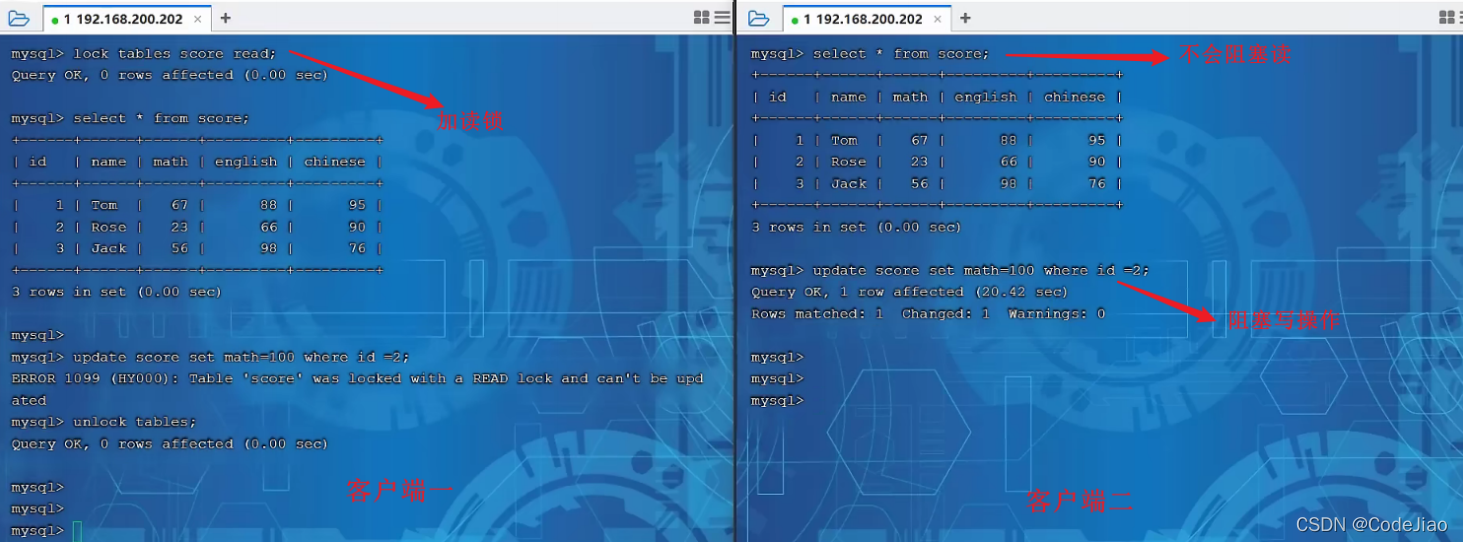
3.2.2 Table Write Lock (write lock)

On the left is the client side , A write lock is added to the specified table , It will block the reading and writing of the client on the right . But this client can read and write .
test :

3.2.3 Summary
Read locks do not block reads from other clients , But it will block writing . The write lock will block the reading of other clients , It will block the writing of other clients .
3.3 Metadata lock ( Automatic addition , Once the transaction is committed, the metadata lock will be automatically released )
meta data lock , Metadata lock , Abbreviation MDL.
MDL The locking process is automatically controlled by the system , No explicit use is required , When accessing a table, it will automatically add .MDL The main function of the lock is Maintain data consistency of table metadata , When there are active transactions on the table , You cannot write metadata . for fear of DML And DDL Conflict , Ensure the correctness of reading and writing .
Metadata can be simply understood as the table structure of a table . in other words , When a table involves uncommitted transactions , You cannot modify the table structure of this table .(MySQL The default is transaction commit )
stay MySQL5.5 Introduced in MDL, When adding, deleting, modifying and querying a table , Add MDL Read the lock ( share ); When changing the table structure , Add MDL Write lock ( Exclusive ).
common SQL In operation , Metadata lock added :
| Corresponding SQL | Lock type | explain |
|---|---|---|
| lock tables xxx read / write | SHARED_READ_ONLY / SHARED_NO_READ_WRITE | |
| select 、select …lock in share mode | SHARED_READ | And SHARED_READ、SHARED_WRITE compatible , And EXCLUSIVE Mutually exclusive |
| insert 、update、delete、select … for update | SHARED_WRITE | And SHARED_READ、SHARED_WRITE compatible , And EXCLUSIVE Mutually exclusive |
| alter table … | EXCLUSIVE | With other MDL Are mutually exclusive |
In general SHARED_READ and SHARED_WRITE compatible , And they're not compatible EXCLUSIVE.
demonstration :
When executed SELECT、INSERT、UPDATE、DELETE When waiting for a statement , The metadata sharing lock is added (SHARED_READ / SHARED_WRITE), Is compatible with .

When executed SELECT When the sentence is , The metadata sharing lock is added (SHARED_READ), Will block the metadata exclusive lock (EXCLUSIVE), They are mutually exclusive .

We can go through the following SQL, To view the metadata lock in the database ( In fact, the query is the system table performance_schema.metadata_locks The data in it ):
select object_type, object_schema, object_name, lock_type, lock_duration
from performance_schema.metadata_locks;

3.4 Intent locks ( Automatic addition , Once the transaction is committed, the intent lock will be automatically released )
3.4.1 Introduction to intention lock
for fear of DML When executed , Conflict between row lock and table lock , stay InnoDB in The intention lock is introduced , So that the table lock does not need to check whether each row of data is locked , Use intent lock to reduce the checking of table lock .
If there is no intention lock , The client adds a pair of rows after locking the table , How does client 2 lock the table , Let's make a simple analysis through the schematic diagram :
- First, the client side , Start a transaction , And then execute
DMLoperation , In executionDMLWhen the sentence is , Yes, it will involve locking .

- When client 2 , I want to add... To this table Table locks when , It will check whether the current table has a corresponding row lock , without , Add table lock , At this time, the data from the first row , Check to the last row of data , Low efficiency ( Full table scan ).

After having intention lock :
Client 1 , In execution DML In operation , Row locks will be added to the rows involved , At the same time, the intention lock will be added to the table .
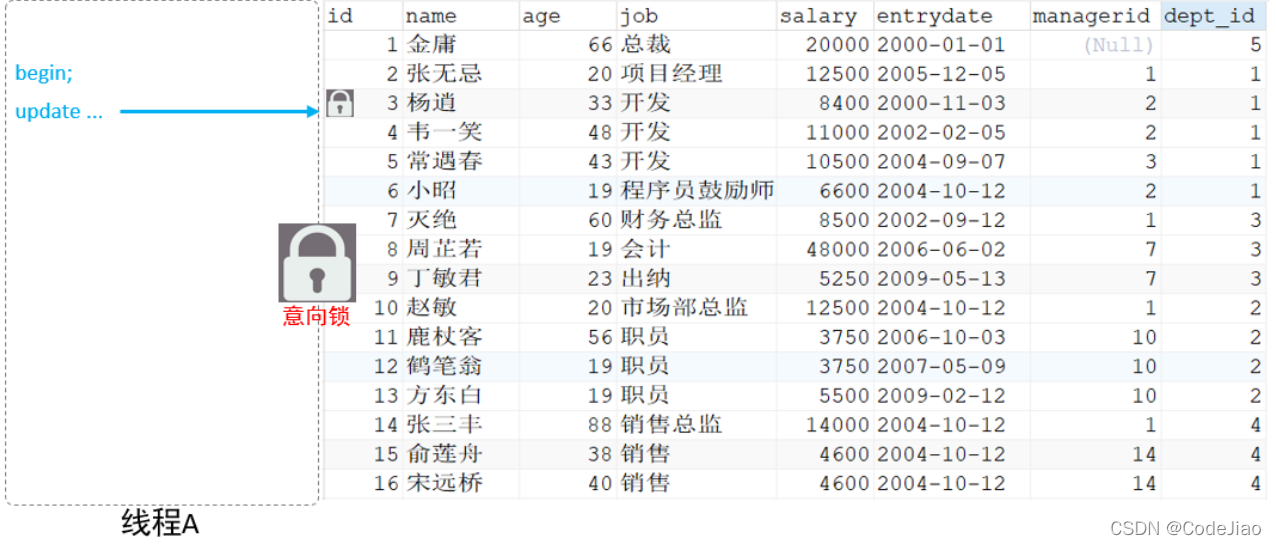
- And other clients , When locking this watch , It will judge whether the table lock can be successfully added according to the intention lock added on the table , Instead of judging the line lock line by line ( If you want to lock, you can't add a watch lock ).

3.4.2 Intent lock classification
- Intention sharing lock (
IS): By statementselect ... lock in share modeadd to . Share lock with table lock (read) compatible , Exclusive lock with watch lock (write) Mutually exclusive . - Intention exclusive lock (IX): from
insert、update、delete、select...for updateadd to . Share lock with table lock (read) And exclusive lock (write) Are mutually exclusive , Intent locks are not mutually exclusive .
Once the transaction is committed , Intention sharing lock 、 Intention exclusive lock , Will automatically release .
You can use the following SQL, Check the locking of intention lock and row lock :
select object_schema, object_name, index_name, lock_type, lock_mode, lock_data
from performance_schema.data_locks;
demonstration :




4. Row-level locks ( Automatic addition , Once the transaction is committed, the row level lock is automatically released )
Row-level locks , Each operation locks the corresponding row data . Locking granularity minimum , The lowest probability of lock collisions , Highest concurrency . Apply to InnoDB In the storage engine .
InnoDB The data is organized based on indexes , Row locking is achieved by locking the index items on the index , Instead of locking records . For row level locks , It is mainly divided into the following three categories :
-
Row lock (Record Lock): Lock a single row record , Prevent other transactions from... On this line update and delete. stay RC( Read submitted )、RR( Repeatable ) Isolation level All of you support .

-
Clearance lock (Gap Lock): Lock index record gap ( This record is not included ), Ensure that the index record gap remains unchanged , Prevent other transactions from going on in this gap insert, It produces unreal reading . stay RR( Repeatable ) Isolation level All of you support .

-
Temporary key lock (Next-Key Lock): Combination of row lock and clearance lock , Lock the data at the same time , And lock the gap in front of the data Gap. stay RR( Repeatable ) Support at isolation level .

4.1 Row lock
4.1.1 Introduction to line lock
InnoDB Two types of row locks are implemented :
- Shared lock (S): Allow a transaction to read a line , Prevent other transactions from obtaining exclusive locks on the same dataset .
- Exclusive lock (X): Allow to get transaction update data of exclusive lock , Prevent other transactions from obtaining shared and exclusive locks of the same dataset .
The compatibility of the two row locks is as follows :

common SQL sentence , When executed , The row locks added are as follows :
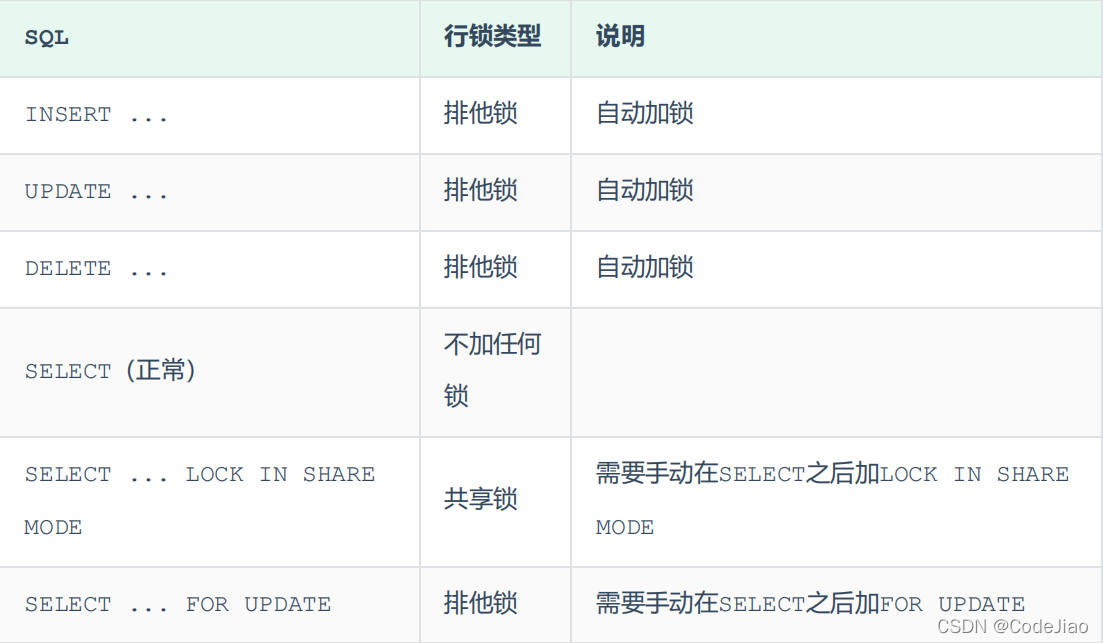
4.1.2 Row lock Demo
By default ,InnoDB stay REPEATABLE READ Transaction isolation level running ,InnoDB Use next-key Lock for search and index scan , To prevent unreal reading .
- When searching for a unique index , When performing equivalence matching on existing records , It will be automatically optimized as row lock .
- InnoDB The row lock of is a lock added to the index , Retrieve data without index criteria , that InnoDB Lock all records in the table , At this point, it will be upgraded to table lock .
You can use the following SQL, Check the locking of intention lock and row lock :
select object_schema, object_name, index_name, lock_type, lock_mode, lock_data
from performance_schema.data_locks;
Presentation data preparation : Just id There is a primary key index , rest 2 Fields have no index
CREATE TABLE `stu`
(
`id` int NOT NULL PRIMARY KEY AUTO_INCREMENT,
`name` varchar(255) DEFAULT NULL,
`age` int NOT NULL
) ENGINE = InnoDB
CHARACTER SET = utf8mb4;
INSERT INTO `stu`
VALUES (1, 'tom', 1);
INSERT INTO `stu`
VALUES (3, 'cat', 3);
INSERT INTO `stu`
VALUES (8, 'rose', 8);
INSERT INTO `stu`
VALUES (11, 'jetty', 11);
INSERT INTO `stu`
VALUES (19, 'lily', 19);
INSERT INTO `stu`
VALUES (25, 'luci', 25);
ordinary select sentence , Execution time , No locks .

select…lock in share mode, Add shared lock
Shared locks are compatible with shared locks .
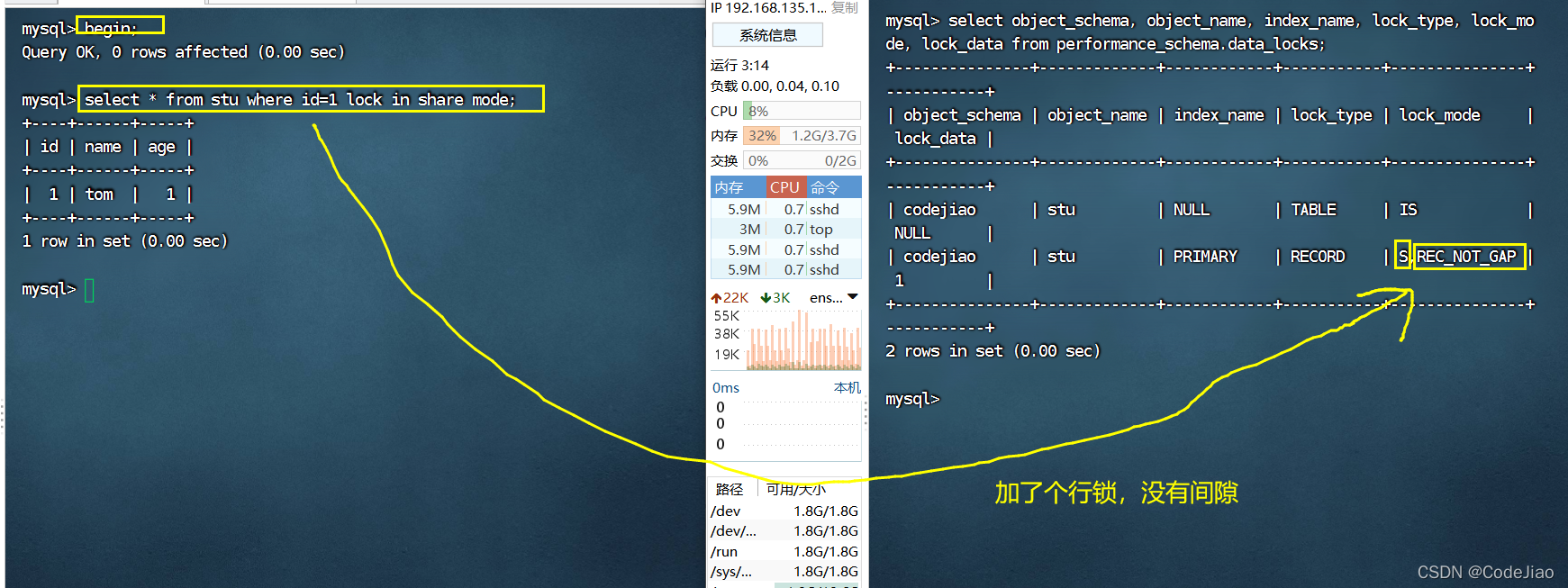


Shared locks and exclusive locks are mutually exclusive .
As soon as the client gets id by 1 This line of shared locks , Second, the client can obtain id by 3 The exclusive lock of this line , Because it's not the same row of data . And if client 2 wants to get id by 1 Exclusive locks in this line , It's going to be blocked , Think that shared locks and exclusive locks are mutually exclusive .

explain : The lock I write here refers to the exclusive lock .
Exclusive lock and exclusive lock are mutually exclusive

When a client , perform update sentence , Would be id by 1 We'll lock our records ; Client 2 , If so update Statement update id by 1 The data of , For id by 1 Data with exclusive lock , But client 2 will be blocked , Because exclusive locks are mutually exclusive . Until the client one , Commit the transaction to , Will release the row lock of this row , At this point, client 2 , unblocked .
No index row lock upgraded to table lock :
stu The data in the table is as follows :

We perform the following operations in two clients :
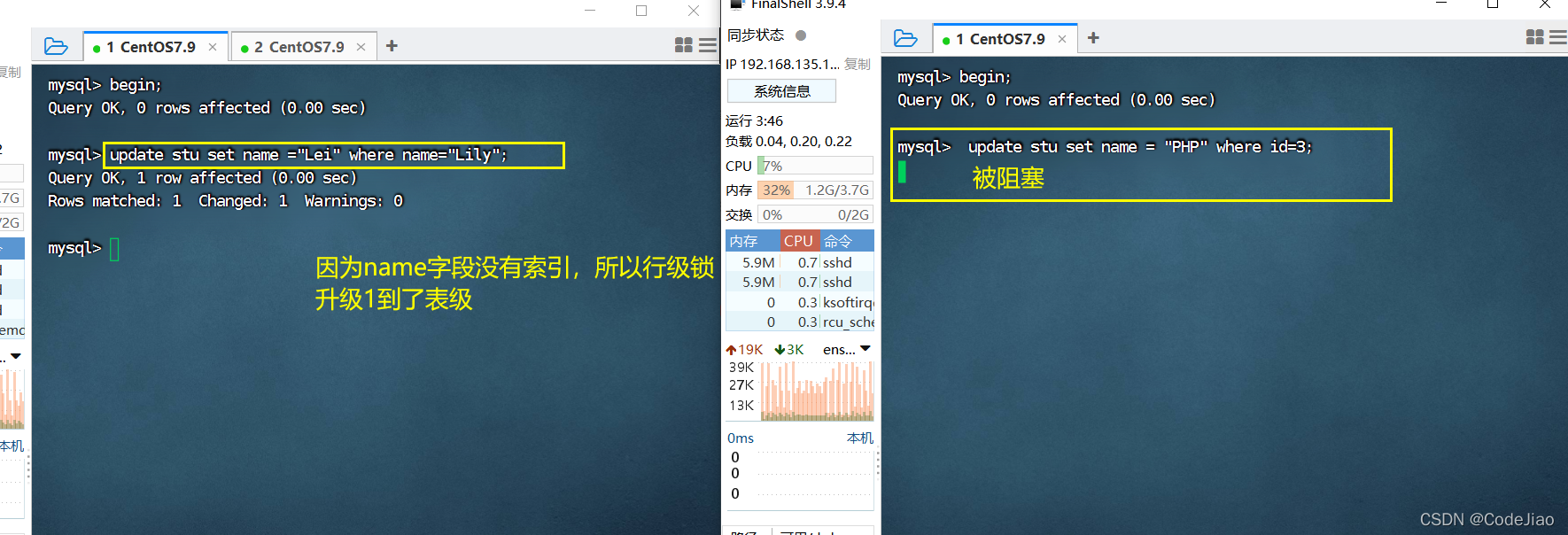
In client 1 , Open transaction , And implement update sentence , to update name by Lily The data of , That is to say id by 19 The record of . Then update... In client 2 id by 3 The record of , But not directly , It's going to be blocked , Why? ? The reason is because at this time , Client 1 , according to name When the field is updated ,name The field has no index , If there is no index , At this point, the row lock will be upgraded to a table lock ( Because row locks are locks on index entries , and name No index ).
Next , Let's focus on name Field indexing , After indexing , Do another test :
create index idx_stu_name on stu(name);


Now we can see , Client 1 , Open transaction , Then it's still based on name updated . And client 2 , Updating id by 3 When the data is , The update is successful , Not blocked . This shows that , We update according to the index field , You can avoid upgrading row locks to table locks .
4.2 Clearance lock & Temporary key lock (next-key lock )
By default ,InnoDB stay REPEATABLE READ Transaction isolation level running ,InnoDB Use next-key lock ( Temporary key lock ) Search and index scan , To prevent unreal reading .
- Equivalent query on Index ( unique index ), When locking records that do not exist , Optimized for clearance lock .
- Equivalent query on Index ( It's not the only common index ), When traversing to the right, the last value does not meet the query requirements ,next-key lock Degenerate to clearance lock .
- Range query on Index ( unique index ) Access to the first value that does not satisfy the condition .
Be careful : The only purpose of a gap lock is to prevent other transactions from inserting gaps . Gap locks can coexist , A gap lock adopted by one transaction will not prevent another transaction from adopting a gap lock on the same gap .
Demonstration of examples :
Equivalent query on Index ( unique index ), When locking records that do not exist , Optimized for clearance lock

Only one client , Transaction committed ( Release the clearance lock ), To insert id by 7 The data of

Equivalent query on Index ( It's not the only common index ), When traversing to the right, the last value does not meet the query requirements ,next-key lock Degenerate to clearance lock .
Introduce and analyze :
We know InnoDB Of B+ Tree index structure , Leaf nodes are ordered two-way linked lists . If , According to this secondary index, the query value is 18 The data of , And add a shared lock , We're just locking 18 Is this all right ? Not at all , Because it's a non unique index , There may be more than one... In this structure 18 The existence of , therefore , Will continue to look back when locking , Find a value that does not meet the condition ( In the current case, that is 29). It will be right at this time 18 Add temporary key lock , Also on 29 Lock the previous gap .


Range query on Index ( unique index ) Access to the first value that does not satisfy the condition .
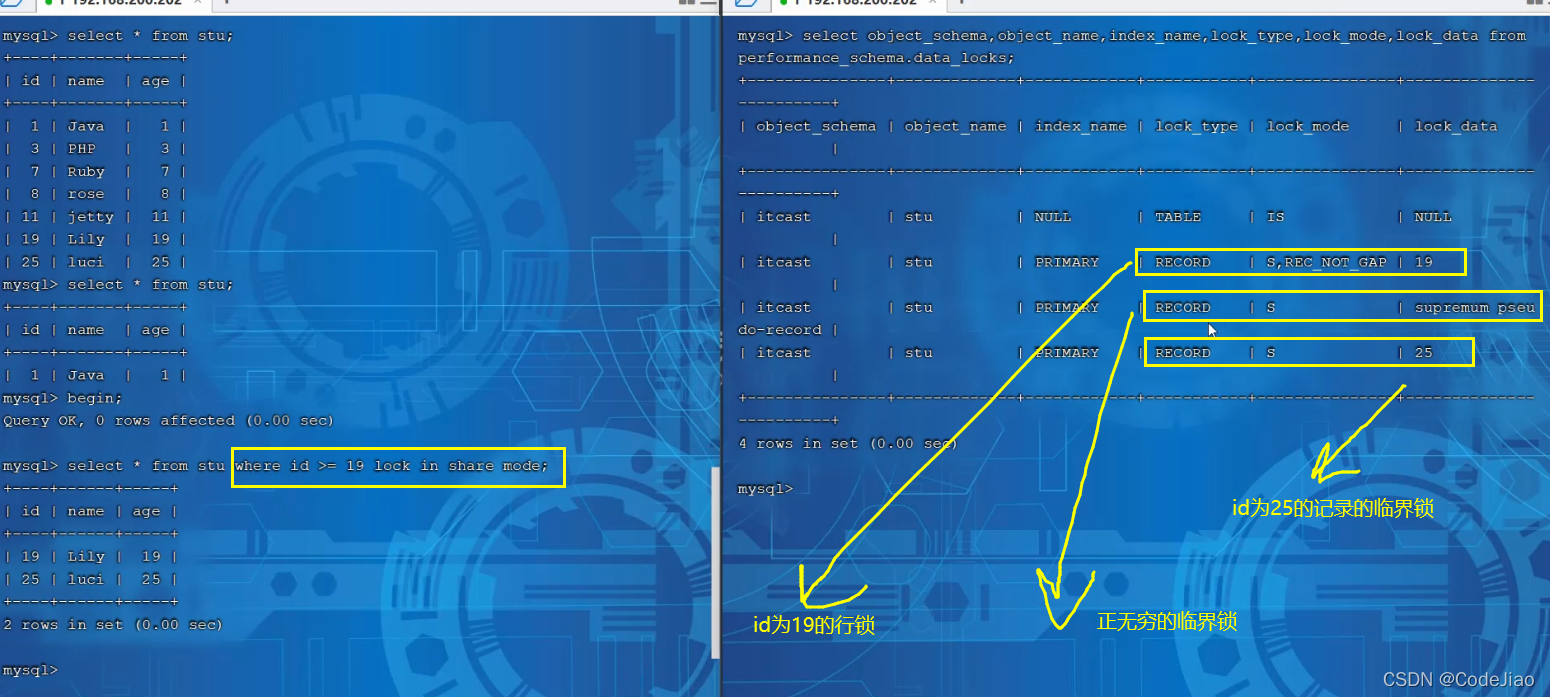
The query criteria are id>=19, And add a shared lock . At this point, we can use the existing data in the database table , Divide the data into three parts :
[19](19,25](25,+∞]
So the database data is locked , Will be 19 With a row lock ,25 The key lock of ( contain 25 And 25 The gap before ), Positive infinite critical lock ( Positive infinity and the gap before ).
5. Summary

版权声明
本文为[CodeJiao]所创,转载请带上原文链接,感谢
https://yzsam.com/2022/04/202204231940567573.html
边栏推荐
- MySQL 进阶 锁 -- MySQL锁概述、MySQL锁的分类:全局锁(数据备份)、表级锁(表共享读锁、表独占写锁、元数据锁、意向锁)、行级锁(行锁、间隙锁、临键锁)
- MySQL syntax collation (4)
- How to use go code to compile Pb generated by proto file with protoc Compiler Go file
- Steps to build a deep learning environment GPU
- Mysql database - single table query (III)
- [H264] hevc H264 parsing and frame rate setting of the old version of libvlc
- 数据库查询 - 选课系统
- Deep learning -- Summary of Feature Engineering
- Lpc1768 optimization comparison of delay time and different levels
- How about Bohai futures. Is it safe to open futures accounts?
猜你喜欢
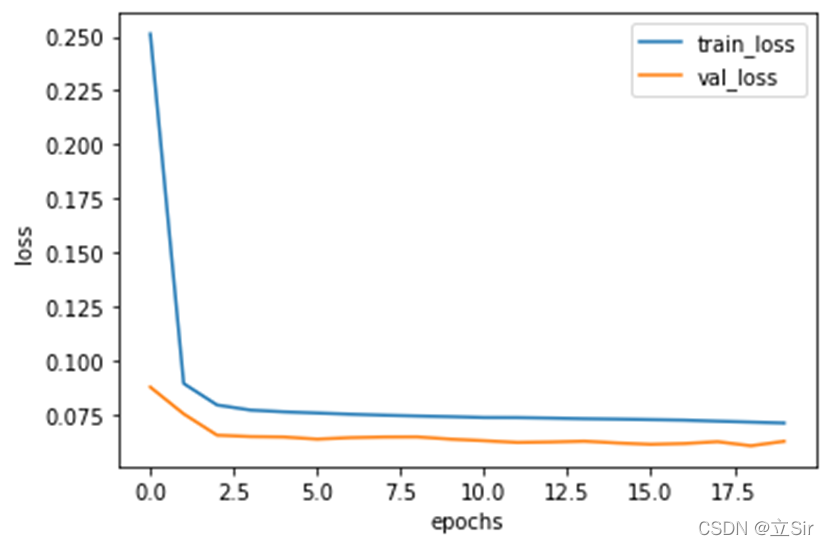
【数值预测案例】(3) LSTM 时间序列电量预测,附Tensorflow完整代码

MySQL lock
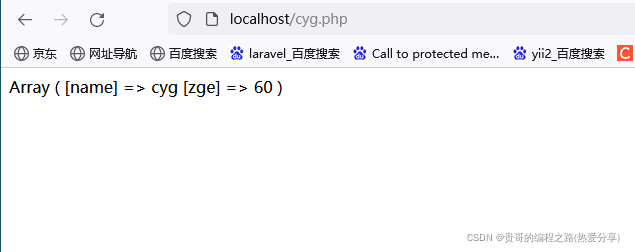
php参考手册String(7.2千字)
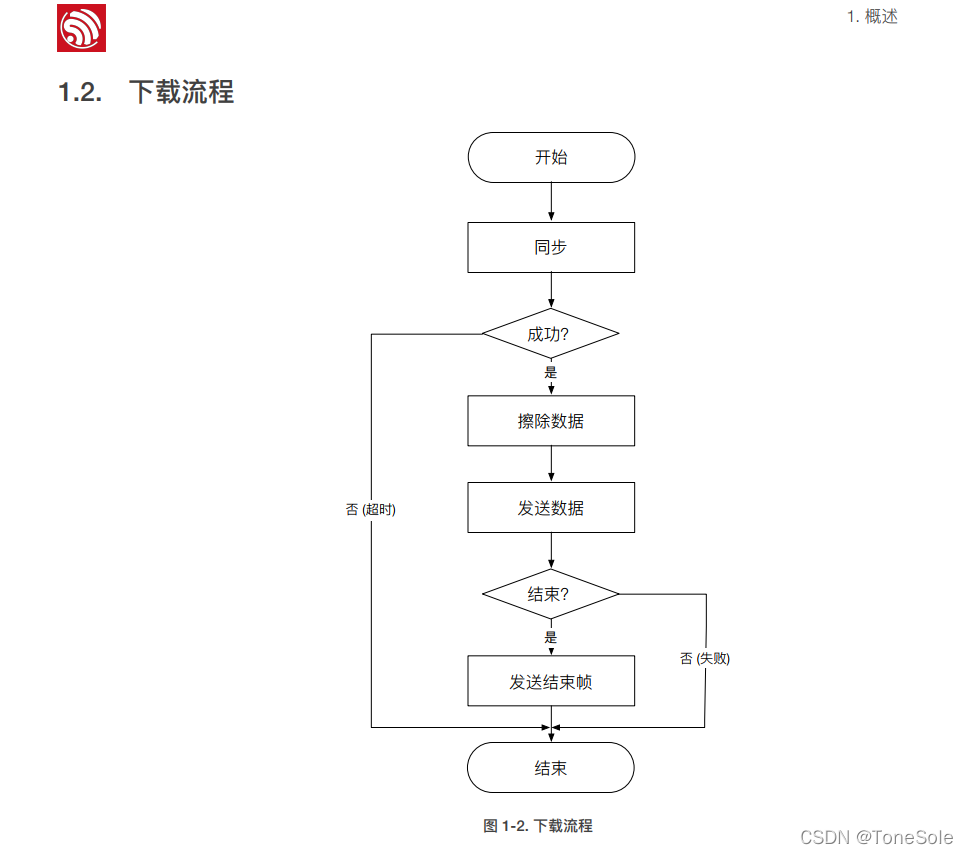
ESP8266-入门第一篇

Unity general steps for creating a hyper realistic 3D scene

An algorithm problem was encountered during the interview_ Find the mirrored word pairs in the dictionary

MySQL syntax collation (5) -- functions, stored procedures and triggers

antd dropdown + modal + textarea导致的textarea光标不可被键盘控制问题
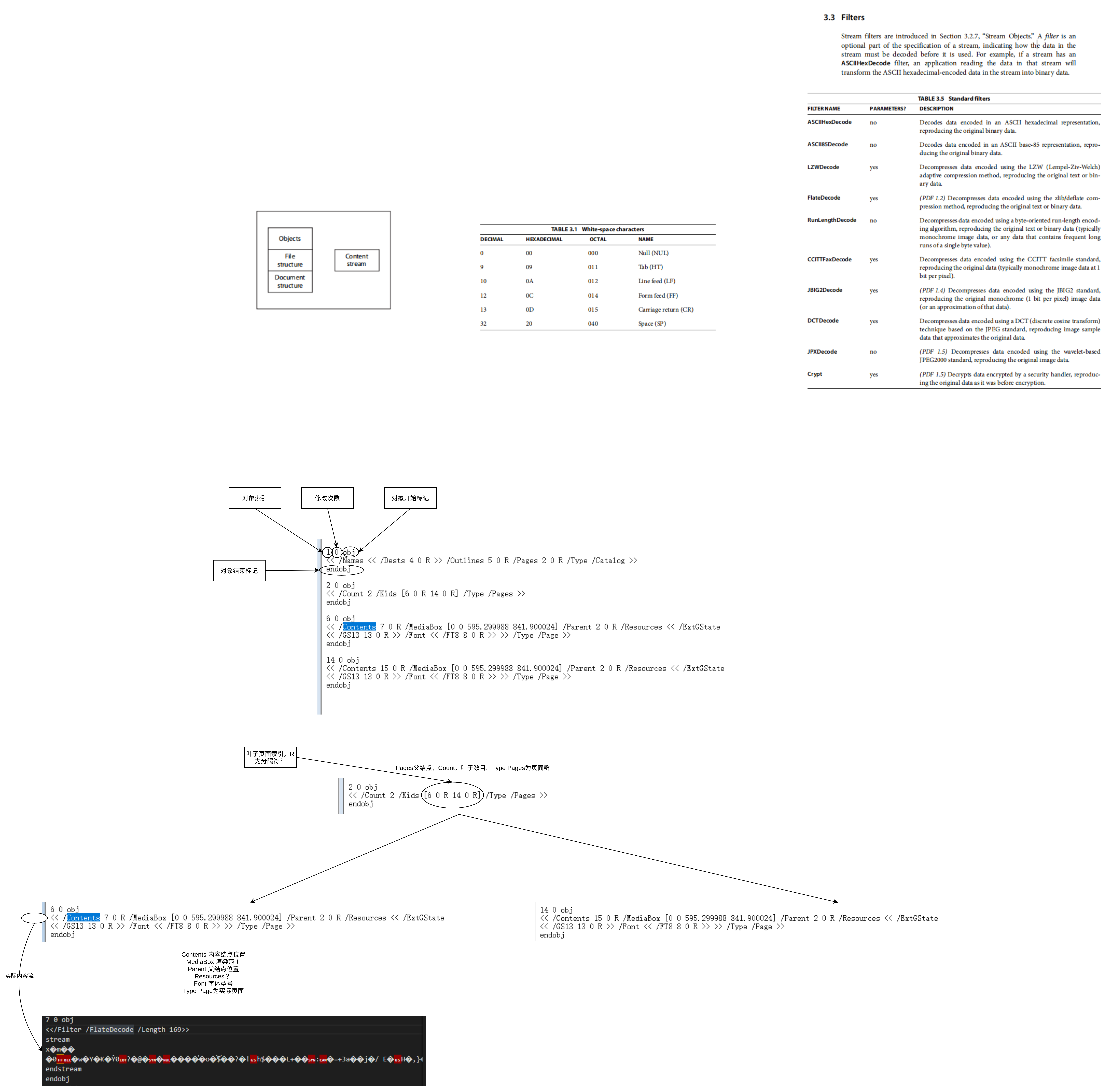
Pdf reference learning notes

The textarea cursor cannot be controlled by the keyboard due to antd dropdown + modal + textarea
随机推荐
Class loading process of JVM
山东大学软件学院项目实训-创新实训-网络安全靶场实验平台(五)
A simple (redisson based) distributed synchronization tool class encapsulation
Data analysis learning directory
高效的串口循环Buffer接收处理思路及代码2
山大网安靶场实验平台项目—个人记录(四)
【数值预测案例】(3) LSTM 时间序列电量预测,附Tensorflow完整代码
Zero base to build profit taking away CPS platform official account
Hot reload debugging
What is a message queue
kibana 报错 server is not ready yet 可能的原因
视频理解-Video Understanding
数据库查询 - 选课系统
How to select the third-party package of golang
图书管理数据库系统设计
Design of warehouse management database system
NiO related Basics
The usage of slice and the difference between slice and array
Class loading mechanism
A brief explanation of golang's keyword "competence"